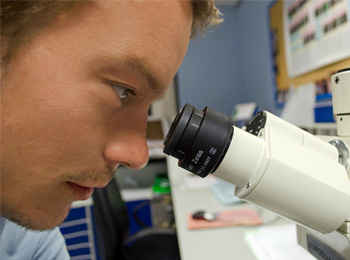Clone
AM1 4
Antibody is raised in
Mouse
Antibody's reacts with
Human
Storage
-20ºC
Protein number
see ncbi
Application
Western Blot
Latin name
Mus musculus
Antibody's specificity
No Data Available
Category
Primary Antibodies
Antigen-antibody binding interaction
Mouse anti Caspase-3 Antibody
Antibody's reacts with these species
This antibody doesn't cross react with other species
Other description
Provided as solution in phosphate buffered saline with 0.08% sodium azide. Protein A/G Chromatography
Antibody's suited for
Detects human Caspase-3 by Western blot. Optimal concentration should be evaluated by serial dilutions.
Antibody come from
Hybridoma produced by the fusion of splenocytes from mice immunized with recombinant human Caspase-3 protein and mouse myeloma cells.
Warnings
This product is intended FOR RESEARCH USE ONLY, and FOR TESTS IN VITRO, not for use in diagnostic or therapeutic procedures involving humans or animals. This datasheet is as accurate as reasonably achievable, but Nordic-MUbio accepts no liability for any inaccuracies or omissions in this information.
Description
This antibody needs to be stored at + 4°C in a fridge short term in a concentrated dilution. Freeze thaw will destroy a percentage in every cycle and should be avoided.Human and some mouse caspases are active in apoptosis and cell death and even in necrosis and inflammation. CASP Gene and orthologous enzymes have been identifies successfully in the signal transduction cascade and pathways.
Test
Mouse or mice from the Mus musculus species are used for production of mouse monoclonal antibodies or mabs and as research model for humans in your lab. Mouse are mature after 40 days for females and 55 days for males. The female mice are pregnant only 20 days and can give birth to 10 litters of 6-8 mice a year. Transgenic, knock-out, congenic and inbread strains are known for C57BL/6, A/J, BALB/c, SCID while the CD-1 is outbred as strain.
Relevant references
1. Slee, E.A., et al. Ordering the cytochrome c-initiated caspase cascade: hierarchical activation of caspases-2, -3, -6, -7, -8, and -10 in a caspase-9-dependent manner. J. Cell Biol. 1999, 144, 281-292_x000B__x000B_2. Ueda, S., et al. Redox regulation of caspase-3(-like) protease activity: regulatory roles of thioredoxin and cytochrome c. J. Immunol. 1998, 161, 6689-6695 _x000B__x000B_3. Samali, A., et al. Presence of a pre-apoptotic complex of pro-caspase-3, Hsp60 and Hsp10 in the mitochondrial fraction of jurkat cells. EMBO J. 1999, 18, 2040-2048_x000B__x000B_4. Cohen, G.M., et al. Caspases: the executioners of apoptosis. Biochem. J. 1997, 326, 1-16
Long description
Caspase-3 along with caspase 7 and 6 form the group of effector caspases that are responsible for the cleavage of multiple substrates including the cytokeratins, PARP, alpha fodrin, NuMA and others. Caspase-7 occurs in three varient forms._x000B__x000B_Caspase-3-like activities are required for Fas-mediated apoptosis. However, the role of caspase-1 and caspase-3 in mediating Fas-induced cell death is not clear. Although wild-type, caspase-1(-/-), and caspase-3(-/-) hepatocytes were killed at a similar rate when cocultured with FasL expressing NIH 3T3 cells, caspase-3(-/-) hepatocytes displayed drastically different morphological changes as well as significantly delayed DNA fragmentation. For both wild-type and caspase-1 (-/-) apoptotic hepatocytes, typical apoptotic features such as cytoplasmic blebbing and nuclear fragmentation are seen within 6 hr, but neither event was observed for caspase-3(-/-) hepatocytes. In thymocytes apoptotic caspase-3 (-/-) thymocytes exhibit similar abnormal morphological changes and delayed DNA fragmentation observed in hepatocytes. Cleavage of various caspase substrates implicates apoptotic events, including gelsolin, fodrin, laminB, and DFF45/ICAD are delayed or absent. The altered cleavage of these key substrates is likely responsible for the aberrant apoptosis observed in both hepatocytes and thymocytes deficient in caspase-3.
